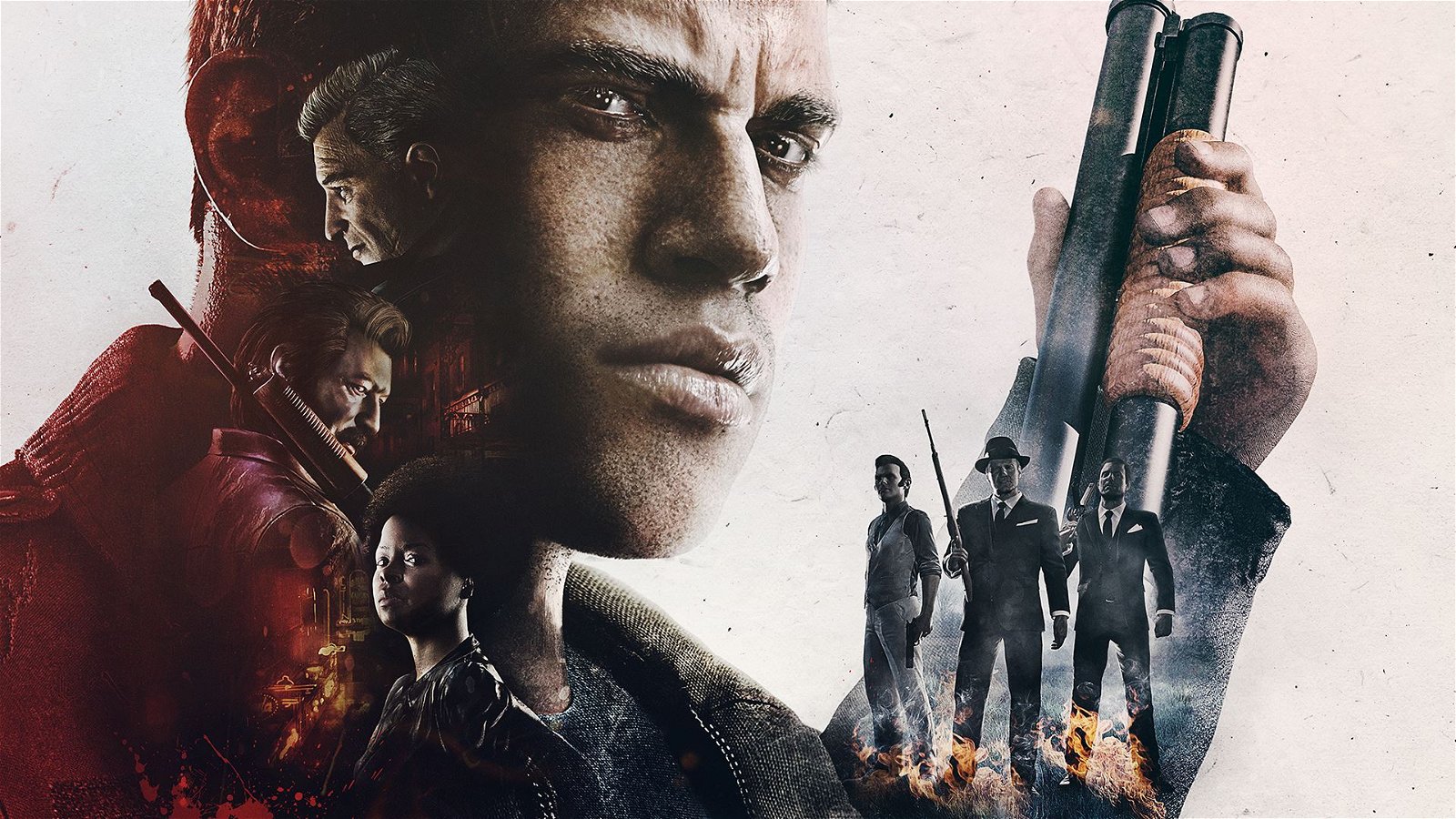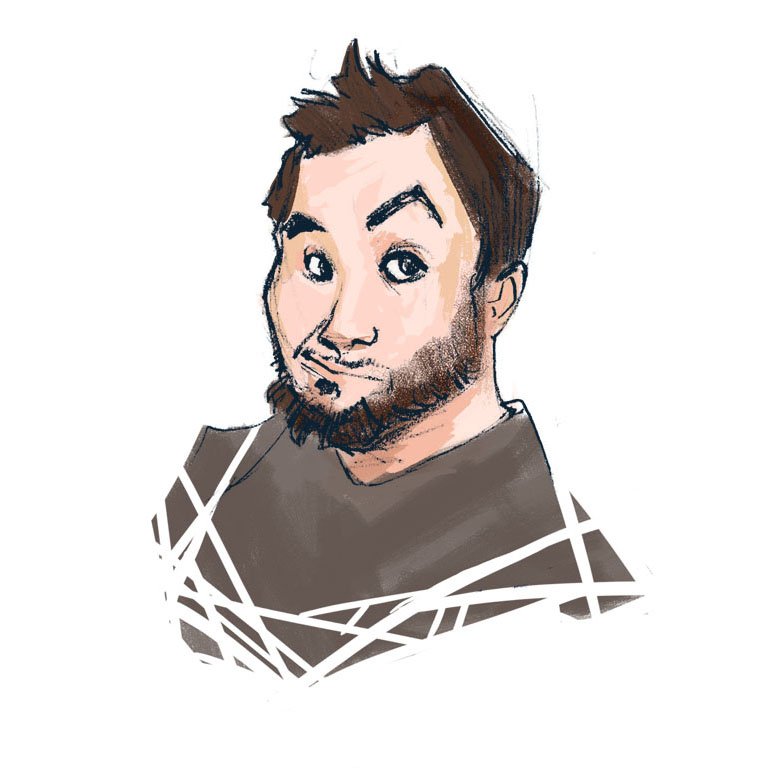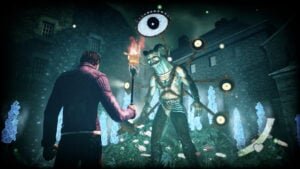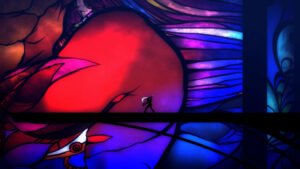Mafia III is easily one of the most anticipated titles of this generation. With its 1960’s Louisiana setting and cast right out of a Scorsese film, it’s easy to see why. But much like its predecessor, Mafia III features a unique score that fits its time period like a glove. Much of that is thanks to the composers Jesse Harlin and Jim Bonney. To discuss the sounds of Mafia III, the former was very candid about his creative process and his excitement for 2K’s upcoming title. In our conversation with Harlin, we discuss his process, and his excitement for the upcoming 2K title.
CGMagazine: A lot of your previous work was based in the Star Wars universe. Now you’re going in the complete opposite direction [with Mafia III]. It’s something based in reality, Louisiana in the 60’s. How did that affect the sound you were going for?
Jesse Harlin: Massively, actually. What we wanted to do when we started was to figure out a signature sound for Mafia III. Being that it’s the third game in the series, there was sort of an established sound. We didn’t know if that established orchestral sound they had in the other two games was going to be the right thing for the new game. What we did was a lot of musical concept art, at the start. A lot of pieces to try and figure out what was the right approach and direction to take the score into. One of the things I suggested was “What about a cinematic approach to the blues?” Cinematic in this case not meaning orchestral, but using traditional blues instruments in a cinematic storytelling way.
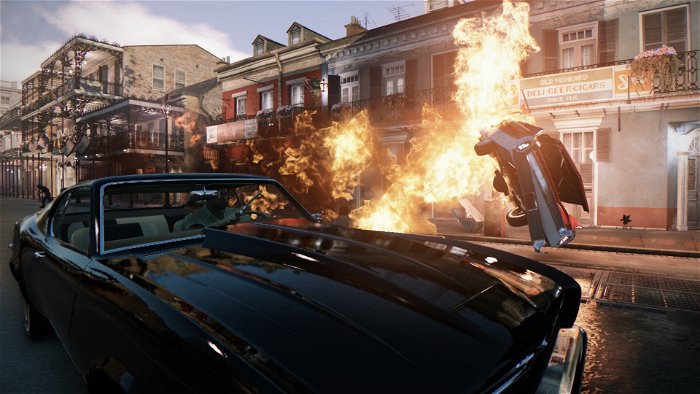
Blues is definitely there in the score. A lot of the material that the game’s other composer (Jim Bonney) wrote is just straight up blues rock. What I was doing, then, was trying to support the story and cutscenes with a blues underscore. I was trying to figure out if you’re going to score or underscore scenes [without] the typical crutches of things like an orchestra. How do you approach that with things like a piano, electric guitar, dobro and upright bass? I found myself taking sounds that I wanted to use with an orchestral approach and then translating it into what I feel would be the replacement for that sound. […] Instead of using orchestral instruments, we have certain characters that are from all over the place in terms of their backgrounds. For example, some of the characters are Haitian, so I was using Haitian and Afro-Cuban percussion to underscore those sections. It very much dictated the radical departure from the Star Wars sound that I was used to.
CGM: Did you have time to see Mafia III before you started the score or were you told “This is the setting we’re going for?”
Harlin: I got to see a little bit of it. I’ve been working on this game for about two years. It was early when I first started, and there was little more than concept art at that point. When we were trying to figure out the direction of the game, they had story ideas and they had concept art, which was very representative of what [the game] ended up being. They also had a lot of descriptions based on what they knew they wanted the characters to be, and that was where we started working: Mostly using Word documents that were descriptions of the world they were going to build.
CGM: Are you a fan of the Mafia series?

Harlin: I did play Mafia II and I dug it. [The game’s] ability to create characters that were believable was really nice and rich. When I played Mafia II just as a gamer, I wished there was sort of more to go off and do in the open-world aspect of it. I think that’s one of the things they’re really trying to address with Mafia III, so I’m looking forward to playing it. Even now, I don’t think I’ve played any of it. I got to see some of it, but I haven’t gotten to play any of it, so I’m really looking forward to it.
CGM: Were you excited about working on the scores for some characters that you’ve already played as?
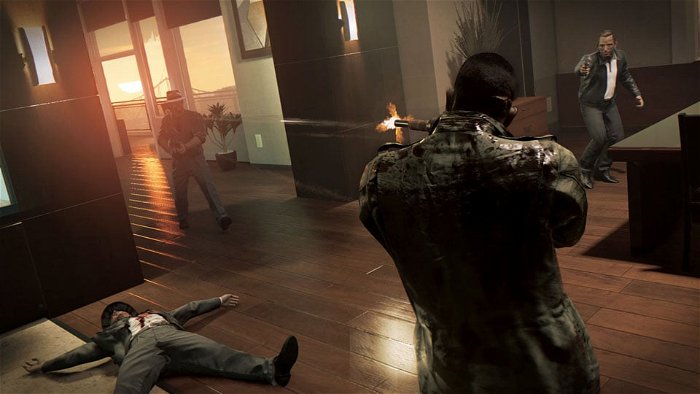
Harlin: Yeah, it was fun to see [Vito Scaletta from Mafia II] come back. The game’s director, Haden Blackman, was very insistent that he wanted the score to be thematic and have characters represented by themes. It made total sense that when it came to scoring Vito, I made some callbacks in Vito’s music back to the main menu melody of Mafia II. It may not immediately jump out as being instantly recognizable as a quote of it, but it’s definitely there. It’s this descending b-minor melodic line that I carried over and referenced in at least one section in the new game.
CGM: That actually leads right into my next question. Obviously when you’re told “We’re doing 1960s, New Orleans, heavy blues influence”, where did you find your inspiration for that?
Harlin: Early on, what I proposed to the team was that after I had been thinking about it for a couple days, I got in touch with their audio director and said, “here’s how I see this breaking down. I think you’ve got four different cardinal direction points that you can take this score in. What I’m going to propose is that I do four different demos for you of each style in its pure form. We’ll call these ‘fence posts,’ where we’re fencing off the area within which the score may eventually be. The final score may end up being some combination of some or all of this. But these are going to be the four pure fence posts within which we’ll define the actual sound.”
One was orchestral, a traditional orchestral demo. One was the blues where we ended up. One was 60s rock-inspired, like if the game had been scored by 60s-era Led Zeppelin and The Doors. Reading through the script and looking at the story, there were elements of it that seemed like a Blaxploitation film sort of approach, so I did a very Lalo Schifrin 1970s funk-based score. I did all of that, then sent them in.
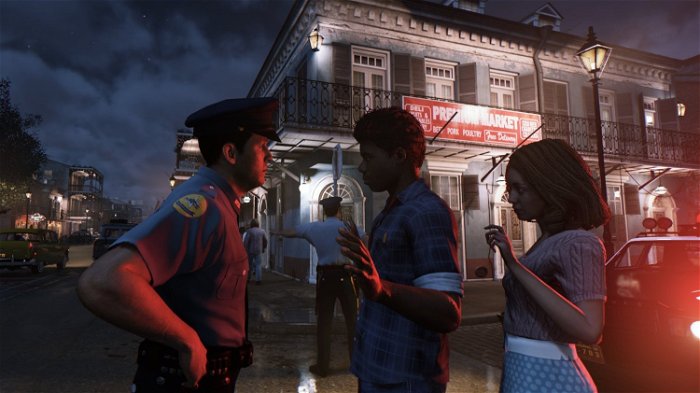
Haden and Matt sat down together and had a lot of thoughts on everything and decided that the orchestral one was the safe way to go, so let’s explore other things, and if they don’t work, we know we have that in the back pocket. Let’s try and do something more interesting.
The 60’s rock one was cool, but there was a concern that having a giant wall of guitars […] might become a problem in terms of […] trying to make frequency space for all of the guns and dialogue and ambience. You can have a big wall of sound when you’re just listening to music and it isn’t a problem, but if you’re actually trying to telegraph important information to the player, then that giant wall of guitars is probably going to get in your way.
The funk one, everybody agreed that it sounded cool, but Haden was insistent that this is not a Blaxploitation story; this is not the direction we’re going, so that idea was off the table. Everyone was excited about the blues demo, so I started doing more iterations and explorations on that, and that was ultimately the direction that the game went in, with one exception. In the orchestral demo, Matt loved that I had a solo cello in there at one point, and so the score is actually blues and a solo cello that comes in at certain spots. It’s just one of those things that’s sort of a hangover from the original demos I did. He loved the expressive nature of the instrument, so that found its way into the final score.
Continue reading on the next page.
CGM: Were you listening to a lot of a certain band or musician at that time that kind of helped you influence that blues sound?
- Pages:
- 1
- 2
